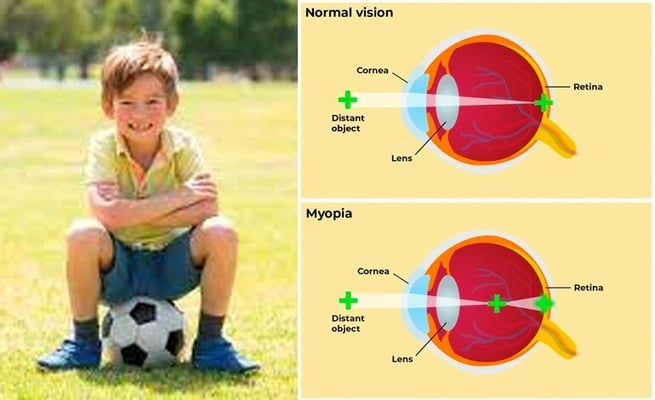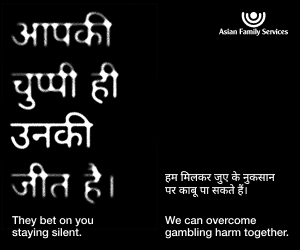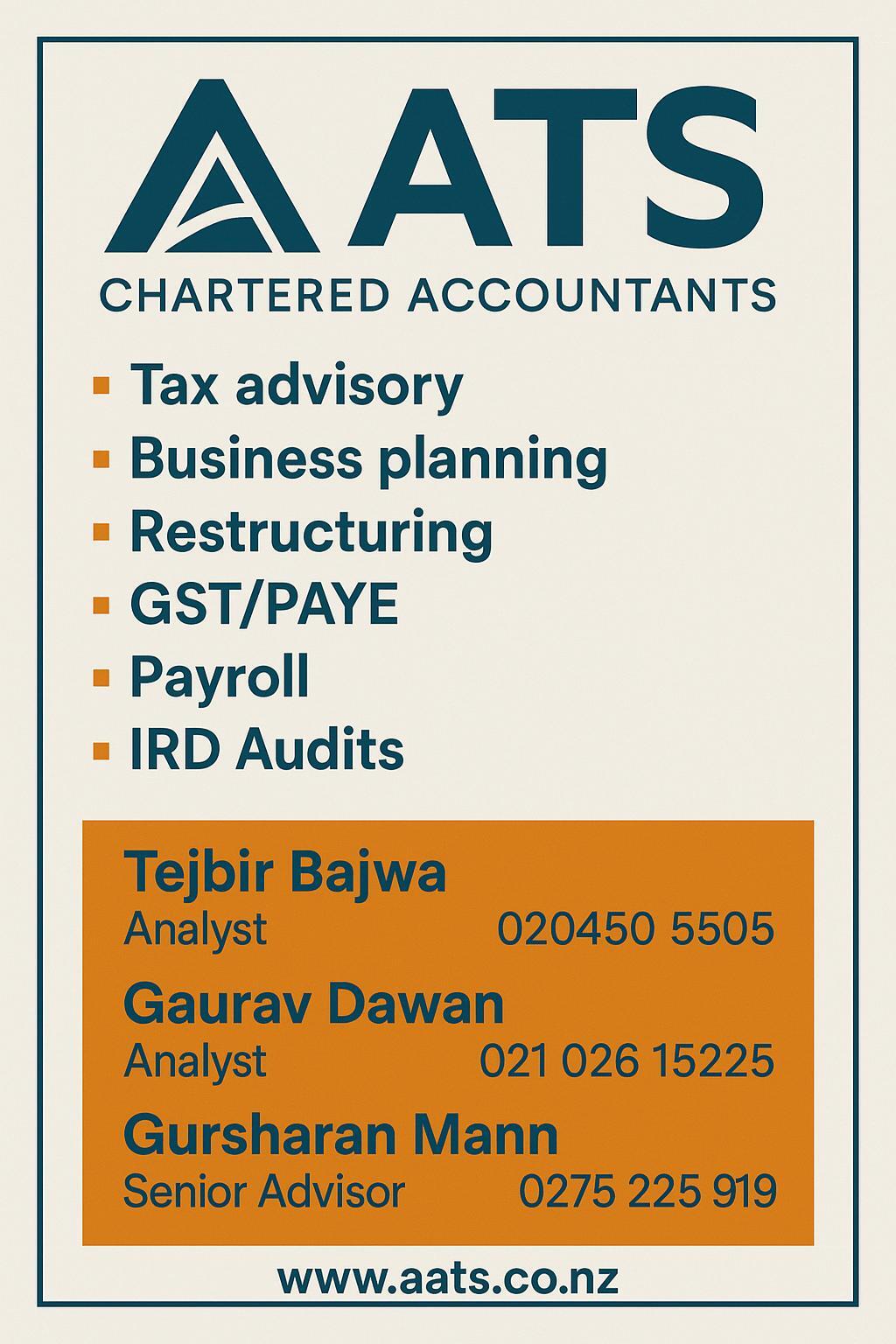Myopia: Top four tips to protect your child’s eyesight

As a child grows, his or her vision passes through key developmental phases which are profoundly integrated with their overall development. Vision can therefore often become the key to understanding how your child is progressing through developmental milestones.
One of the most common eye problems in children is myopia, often referred to as ‘short-sightedness’, and which causes blurred distance vision. The management of myopia and the importance of early detection is critically important as myopia cannot be reversed.
Knowing your child’s potential risk of myopia and taking action early can benefit their academic and physical performance, personal growth and overall health.
Top four actions you can take now!
More Green Time Less Screen Time
Children are spending a lot of time on close-up work, mainly devices and screen time, and less time outdoors. Such lifestyle factors including low levels of outdoor activity [1] may influence the development of myopia.
More research is needed to determine if it is to do with the intensity or brightness of the light or the distances that children focus on, but what is proven is that there is a link between outdoor time and its benefit to a child’s myopia development.
Given that outdoor play is free, “more green time less screen time” is a timely reminder for moderation in an increasingly digital world.
Limit prolonged near tasks
Minimising screen time, taking short breaks every 20 minutes, using good lighting when reading and doing close-up work may help to prevent or reduce your child’s myopia progressing. Regular check-ups are even more important than usual with the increase in screen time and close-up work.
Have your eyes examined by an Optometrist
Optometrists are able to diagnose myopia and may be able to slow the progression of myopia in children. It’s therefore important for a child to see an optometrist early in their developmental years, even if there are no known problems, as high myopia is associated with lifelong increased risks of eye diseases and children may be unaware their vision is not as it should be.
Discuss myopia management options
As a parent it may be comforting to know that there are new techniques and strategies emerging to limit progression of myopia. You can familiarise yourselves with these myopia management options that are now available, to have an informed discussion with the optometrist or ophthalmologist
Several interventions have been explored to slow the progression of myopia.
- Pharmacological: Atropine eye drops
- Contact lenses: Special designs of soft lenses and orthokeratology lenses
- Glasses: Special designs of spectacle lenses
Treating myopia in children doesn’t mean just getting glasses. The above options can induce changes in the structure and focusing of the eye to reduce the development and progression of myopia.
Get eye health on your child’s health check-up list
Regular eye examinations are very important. Similar to regular dental check-ups, your Optometrist can help to prevent bigger problems in the future. As recommended by the New Zealand Association of Optometrists, a child’s first eye test should be with an optometrist before starting school and at regular intervals thereafter.
Good vision is key to a child’s physical development, success in school and overall well-being, so the earlier an eye problem is detected, the earlier an appropriate treatment can be recommended to ensure successful vision correction and life-long benefits.
The author is founding member of the Australia and New Zealand Child Myopia Working Group
As a child grows, his or her vision passes through key developmental phases which are profoundly integrated with their overall development. Vision can therefore often become the key to understanding how your child is progressing through developmental milestones.
One of the most common eye problems...
As a child grows, his or her vision passes through key developmental phases which are profoundly integrated with their overall development. Vision can therefore often become the key to understanding how your child is progressing through developmental milestones.
One of the most common eye problems in children is myopia, often referred to as ‘short-sightedness’, and which causes blurred distance vision. The management of myopia and the importance of early detection is critically important as myopia cannot be reversed.
Knowing your child’s potential risk of myopia and taking action early can benefit their academic and physical performance, personal growth and overall health.
Top four actions you can take now!
More Green Time Less Screen Time
Children are spending a lot of time on close-up work, mainly devices and screen time, and less time outdoors. Such lifestyle factors including low levels of outdoor activity [1] may influence the development of myopia.
More research is needed to determine if it is to do with the intensity or brightness of the light or the distances that children focus on, but what is proven is that there is a link between outdoor time and its benefit to a child’s myopia development.
Given that outdoor play is free, “more green time less screen time” is a timely reminder for moderation in an increasingly digital world.
Limit prolonged near tasks
Minimising screen time, taking short breaks every 20 minutes, using good lighting when reading and doing close-up work may help to prevent or reduce your child’s myopia progressing. Regular check-ups are even more important than usual with the increase in screen time and close-up work.
Have your eyes examined by an Optometrist
Optometrists are able to diagnose myopia and may be able to slow the progression of myopia in children. It’s therefore important for a child to see an optometrist early in their developmental years, even if there are no known problems, as high myopia is associated with lifelong increased risks of eye diseases and children may be unaware their vision is not as it should be.
Discuss myopia management options
As a parent it may be comforting to know that there are new techniques and strategies emerging to limit progression of myopia. You can familiarise yourselves with these myopia management options that are now available, to have an informed discussion with the optometrist or ophthalmologist
Several interventions have been explored to slow the progression of myopia.
- Pharmacological: Atropine eye drops
- Contact lenses: Special designs of soft lenses and orthokeratology lenses
- Glasses: Special designs of spectacle lenses
Treating myopia in children doesn’t mean just getting glasses. The above options can induce changes in the structure and focusing of the eye to reduce the development and progression of myopia.
Get eye health on your child’s health check-up list
Regular eye examinations are very important. Similar to regular dental check-ups, your Optometrist can help to prevent bigger problems in the future. As recommended by the New Zealand Association of Optometrists, a child’s first eye test should be with an optometrist before starting school and at regular intervals thereafter.
Good vision is key to a child’s physical development, success in school and overall well-being, so the earlier an eye problem is detected, the earlier an appropriate treatment can be recommended to ensure successful vision correction and life-long benefits.
The author is founding member of the Australia and New Zealand Child Myopia Working Group








Leave a Comment